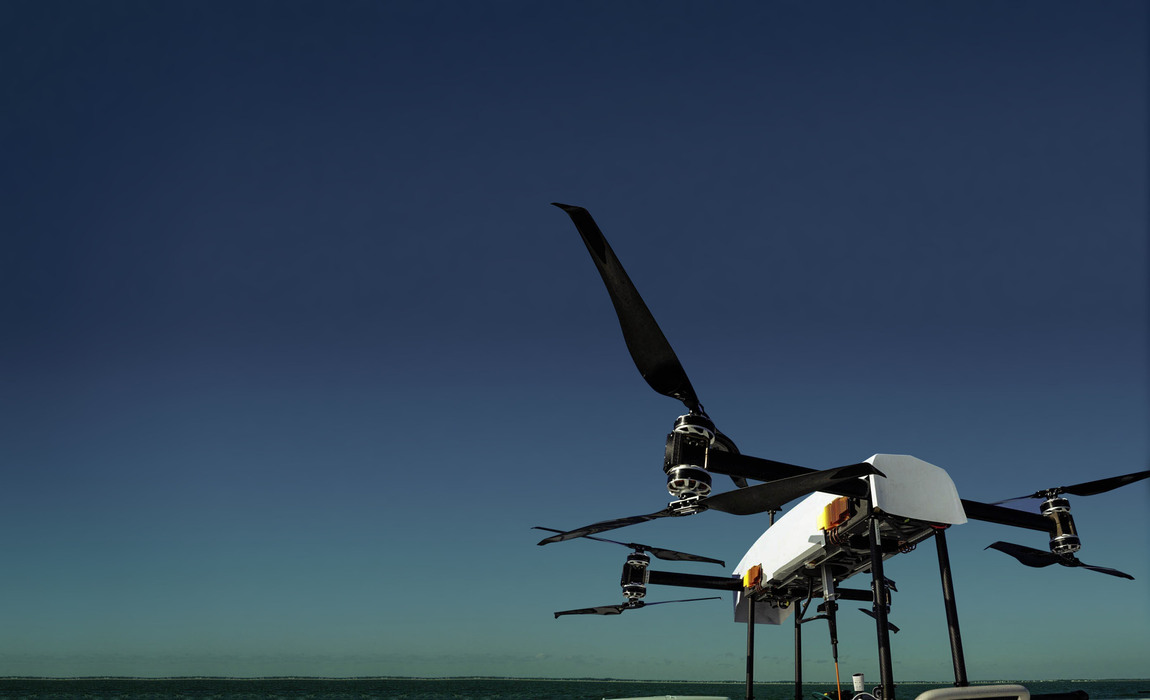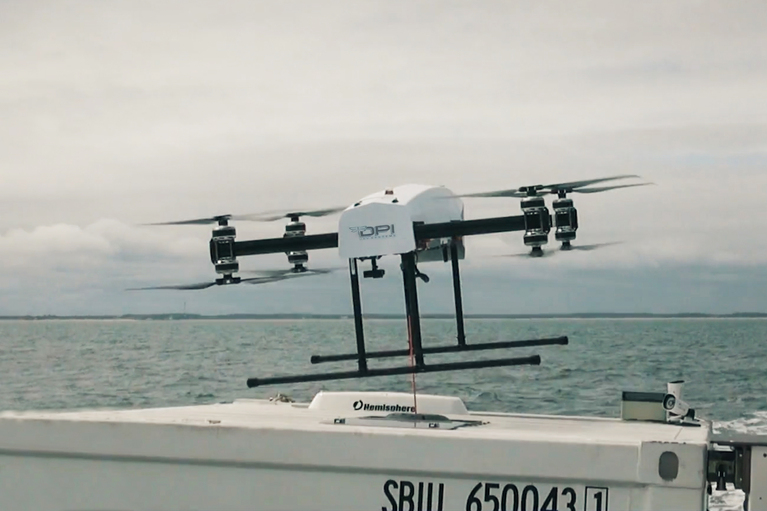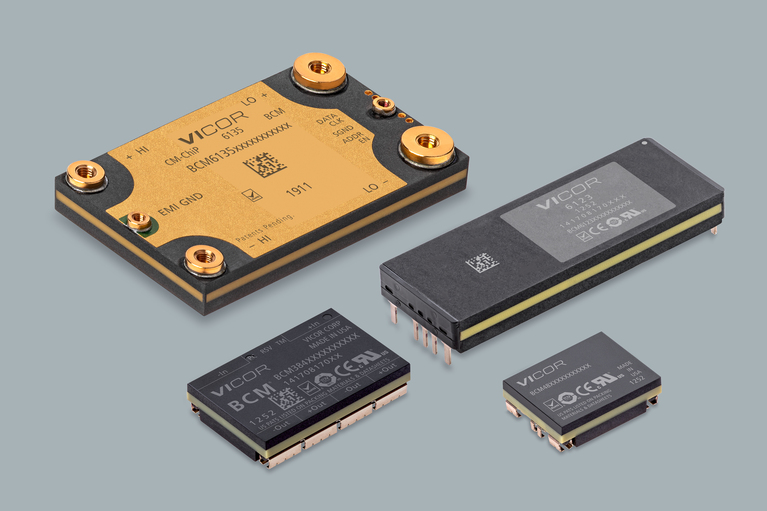Ruggedized inside and out
Ruggedized inside and out
Unmanned tethered blimps were the first stationary aerial communications prototypes, but they failed in windy conditions. Greater demand for remote communications and intelligence, surveillance, reconnaissance (ISR) have driven the launch of many subsequent applications that have also fallen short. Dragonfly Pictures (DPI) developed a new class of drone, the hover-in-place tethered drone. This new vertical lift-off drone is an engineering marvel endowed with extreme power to withstand the harshest elements and remain constantly airborne for weeks.
Customer challenge
Power delivery network challenges

Power density and weight

High voltage

Low EMI
Postcast
Powering Innovation podcast
How is Dragonfly’s new hover-in-place tethered UAV defying maritime communication limits? LISTEN NOWEnabling the thinnest, lightest tether
Enabling the thinnest, lightest tether
The DPI military/industrial-grade Unmanned Multirotor Aerial Relay (UMAR) tethered drone can provide 400+ hours of non-stop uptime and operations – at altitudes up to 500 feet – because of the continuous power flow through the tether. To achieve this, power needs to be delivered from the host vessel to the drone at extremely high voltage (500 – 800V) and low current to enable the use of the thinnest, lightest tether, which in turn enables greater drone mobility and larger airborne payloads. Also, high-voltage conversion must be achieved in the smallest possible footprint and lightweight profile. UMAR’s eight independent rotors require sophisticated, interconnected PCB circuitry, so any space savings enabled at the power-component layer can be repurposed for other value-add components.
Why Vicor
Why Vicor

Up to 776W/in3 power density

High efficiency

Low noise topology
The solution
The power delivery network consists of the Vicor high-voltage BCM4414 VIA low-profile modules (4.35 x 1.4 x 0.37in) within its UMAR tethered drones to enable high-efficiency conversion (98%) from 800V to 50V. The compact footprint and mounting versatility of the BCMs were particularly valuable to DPI designers for achieving an extremely power dense board configuration. There are eight Vicor BCMs arrayed to power the DPI UMAR’s eight independent rotors, with the ability to share power among the rotors in parallel for increased redundancy. The integrated filtering capability within the Vicor BCMs helped to minimize EMI noise.



